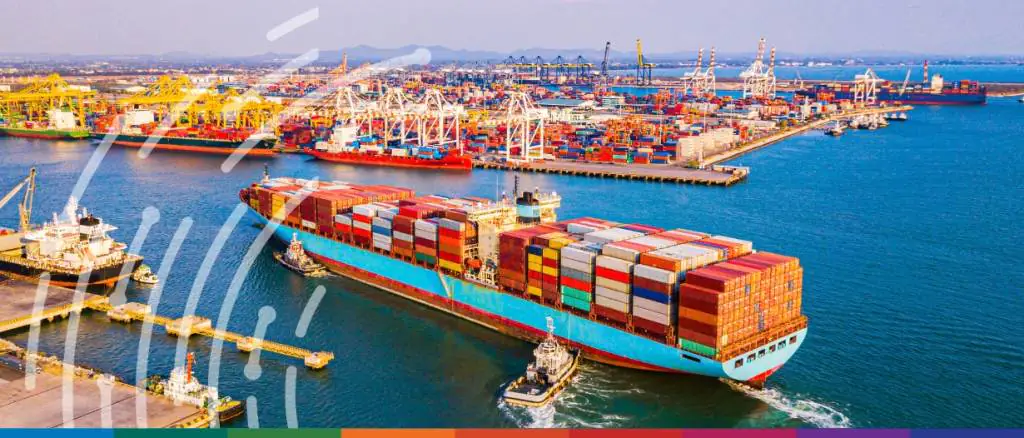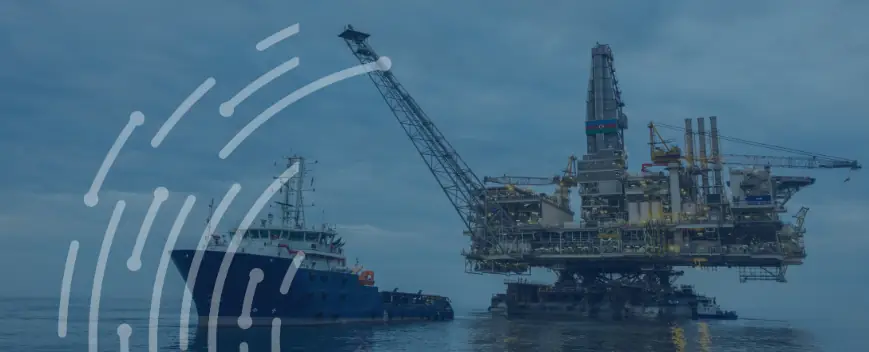Estimated reading time: 6 minutes
There can be little debate that digitalisation and standardisation are having a transformative impact on the trade finance and shipping industries.
To learn more about efforts to improve operational efficiency and sustainability in the shipping space through technological advancements, Trade Finance Global’s (TFG) Brian Canup (BC) spoke with Chris Sunderman (CS), Program Lead for Banks at the Digital Container Shipping Association (DCSA).
BC: Quick introduction! Who are you, and what is your background?
CS: I come from a trade finance background and have a strong focus on improving our industry and striving for operational excellence that fosters a better client experience. I aim to leverage my experience to digitalise for a more sustainable future.
A vital element of this involves collaborating with thought leaders from across the industry – including industry bodies and fintechs – to spearhead technology adoption and foster innovation to improve connectivity.
This, in turn, enables cross- and intra-country access to digital trade for corporates, small- and medium-sized enterprises (SMEs), traders, banks, and other stakeholders, creating a more sustainable global trade ecosystem.
BC: Digitalising documents and shipping has changed rapidly in the past two years. Where is the industry now, and what progress is on the horizon?
CS: The digitalisation of documents within the container shipping industry has progressed significantly over the past two years. DCSA has been leading this change, collaborating with stakeholders to lay the fundamentals for a more efficient future, starting with the electronic bill of lading (eBL).
In 2022, DCSA—along with BIMCO (Baltic and International Maritime Council), FIATA (International Federation of Freight Forwarders Associations), the International Chamber of Commerce (ICC), and SWIFT—launched the Future of International Trade (FIT) Alliance to accelerate the adoption of the eBL among its members.
This led to the launch of the FIT Alliance’s eBL Declaration in September 2023, which aims to secure commitment from international stakeholders to drive digitalisation. Alongside this, DCSA’s nine member carriers set the goal of achieving 100% eBL by 2030 and 50% by 2027 as part of its Digital Trade Initiative.
Importantly, key stakeholders have increasingly pledged support for the eBL. Pacific International Lines (PIL), for example, joined DCSA in April 2024, having previously worked on its own digitalisation initiatives.
Elsewhere, governments and regulators have been working to facilitate the use of digital documents and data—something DCSA actively supports. In 2023, the UK passed the Electronic Trade Documents Act (ETDA), which gave legal recognition to electronic trade documentation such as the eBL.
Such initiatives have seen uptake continue to increase – growing from 1.2% in 2021 to almost 5% in 2024 so far. As more stakeholders become aware of the digital movement and intensify collaboration across the industry, we expect adoption to increase exponentially in the coming years, firmly driven by data, technological and legal interoperability.
To support momentum, we call on all stakeholders to join the digitalisation movement – including carriers, BCOs (Beneficial Cargo Owners), freight forwarders, banks, and insurers.
The time to act is now.

BC: Can you discuss any recent initiatives or collaborations that DCSA is undertaking to promote sustainability within the industry?
CS: DCSA is leading collaborative efforts to digitalise the container shipping industry. Key to this is promoting our digital standards, which facilitate the use of digital documentation such as the eBL.
In addition to increasing security and streamlining operations, a key benefit of the eBL is that eliminating the use of paper drives sustainability within the container shipping sector and beyond.
Given the breadth of the global supply chain, some 40 billion pieces of paper are transported annually, which is both costly and inefficient. Switching to the eBL could save over 28,000 trees per year and reduce greenhouse gas (GHG) emissions by 32 to 86 kg per end-to-end transaction.
In addition to supporting national decarbonisation targets, this would significantly reduce emissions within the shipping sector and ensure that the expected growth in global trade remains sustainable.
BC: What impact do you believe the standardisation of eBLs will have on global trade and shipping operations?
CS: Standardisation of the eBL eases digitalisation and will increase accessibility across the industry.
Currently, non-interoperability constitutes a significant barrier to adoption. So-called digital islands and a lack of standard data formats and processes create confusion – contributing to delays and unnecessary costs. What’s more, there is a wide range of solution providers that work in digital silos, meaning data cannot always be processed across platforms.
DCSA is collaborating with solution providers to develop technical and legal standards that will facilitate the straightforward transfer of data across platforms, regardless of origin, giving businesses the confidence to move forward with adoption.
As a result, processes will be faster, more secure, and gain efficiency. With global trade expected to triple by 2050, this will be central to ensuring the shipping sector – and, indeed, the entire trade eco-system – can keep up with growth and maintain the smooth running of supply chains.
BC: How do you see the role of technology evolving in the shipping industry over the next five to ten years?
CS: Technology will continue to be the driving force for change over the next decade.
We will see a growing number of corporates and cargo owners moving from analogue to digital and adopting digital solutions to foster better decision-making and improve processes.
Banks and other financial institutions will have to keep pace to retain their role in supporting global trade growth. Meanwhile, freight forwarders will likely enhance communication and operational efficiency with a shift toward real-time data. We anticipate that ports and terminals will focus on minimising manual processing and human interaction through data integration.
We also expect that standardisation will continue accelerating the adoption of digital solutions across the supply chain.
There is already a strong correlation between the level of standards adoption in areas such as track-and-trace and operational efficiency, and we are gradually seeing developments in freight visibility, with an increasing number of shippers adopting our common Track and Trace (T&T) API standard.
In September 2023, for instance, less than 100 million APIs were called but this grew to 137 million in March this year – marking a roughly 40% increase.
The Internet of Things (IoT) is another area where we expect increased activity.
IoT enables container lines to obtain real-time information on when a container has been discharged, ready for pick up, or gated out. It also combines different data sources to provide information on micro-level details, such as how close a container is to reaching its inland destination.
Access to this micro information level allows shippers to plan more accurately. We are already seeing significant developments here, with a growing number of container shipping lines fitting their dry fleets with tracking devices. We expect this will continue to play a central role in digitalising shipping in the years to come.
In all areas, we are seeing processes evolve and develop at a rapid pace, and this is thanks to technological advances and innovation. As such, technology will retain a central role in supporting industry growth in the coming decade and beyond.





























